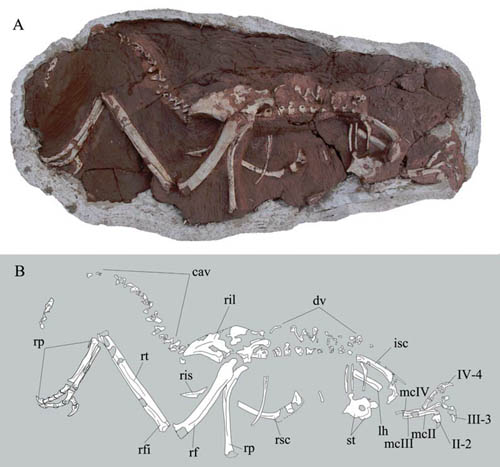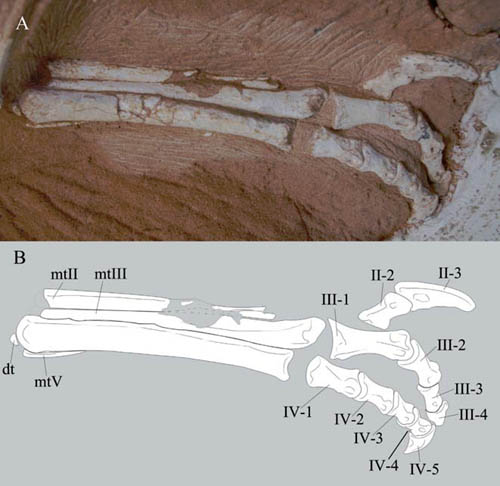| Location: Home > Resources > Multimedia |
| A New Oviraptorid Dinosaur:Wulatelong gobiensis |
|
In a paper published in the journal of Vertebrata PalAsiatica 51(2), the team reported a new oviraptorid, Wulatelong gobiensis gen. et sp. nov., based on a nearly complete skeleton collected from the Upper Cretaceous Wulansuhai Formation of Bayan Mandahu during the 2009 field season. This specimen represents the third oviraptorid species known from the Bayan Mandahu area, providing new data for better understanding the Late Cretaceous dinosaur faunas of the Gobi area. |


